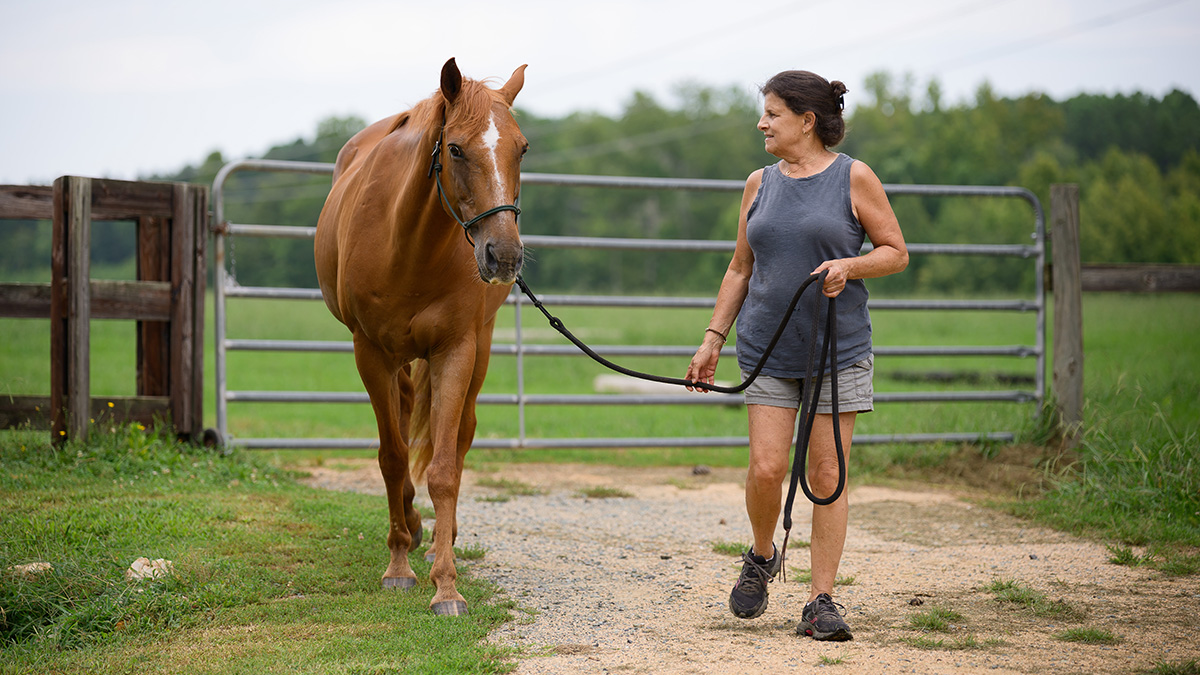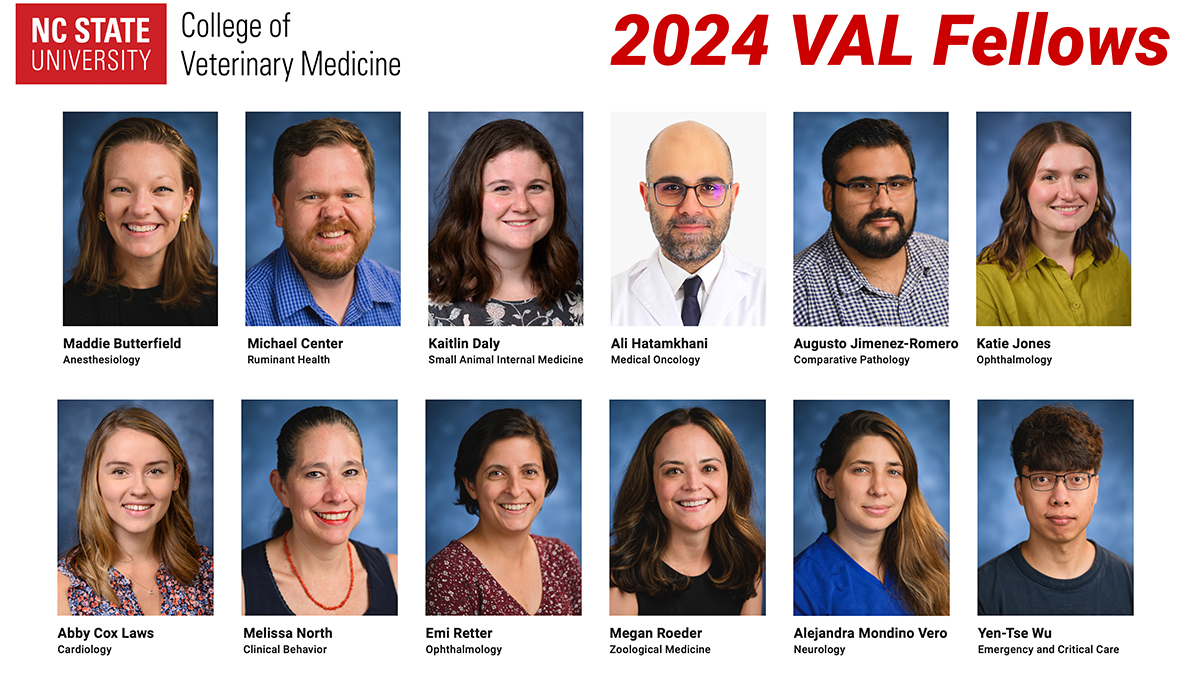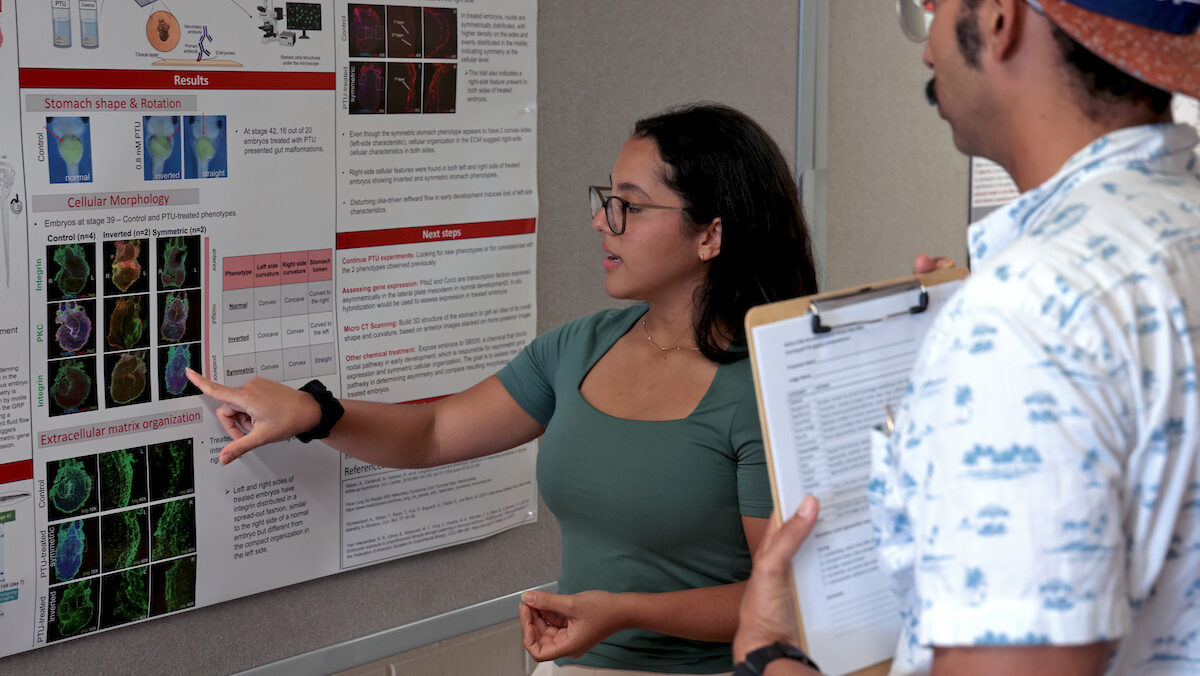Bear of a Patient: Yona Undergoes Arthroscopic Surgery
The following article on an arthroscopic surgery conducted by Dr. Denis Marcellin-Little on a black bear from the Durham Museum of Life and Science originally appeared in the Raleigh News and Observer.
BY JAY PRICE – Staff Writer
RALEIGH—The first attempt at arthroscopic surgery on a bear at the N.C. State University College of Veterinary Medicine ran into complications Tuesday that slowed the operation, but in the end it was successful.
Surgeons working through two tiny cuts removed a bone chip from the right elbow of Yona, a 130-pound black bear. The anesthesia took longer than expected, and the chip had grown since veterinarians discovered it this summer and proved difficult to cut away from the joint, said the lead surgeon, Dr. Denis Marcellin-Little, a professor of orthopedics.
By late afternoon, though, Yona was on a groggy van ride back to her home at the N.C. Museum of Life and Science in Durham.
 "We couldn’t have asked for the surgery to go better," said Sherry Samuels, director of the museum’s animal department. "They got the fragment out, and it was bigger, so we’re glad we did this and it worked out so well."
"We couldn’t have asked for the surgery to go better," said Sherry Samuels, director of the museum’s animal department. "They got the fragment out, and it was bigger, so we’re glad we did this and it worked out so well."
The private nonprofit museum is paying for the surgery. Samuels said she didn’t have the total cost yet.
Yona, whose name is the Cherokee word for bear, was found beside a mountain road in Tennessee last year when she was just a four-pound cub. Now she’s the youngest and smallest of the museum’s five black bears, which live in an outdoor enclosure.
CAPTION: Veterinary technician Shane Christian, second from left, holds Yona’s front limbs while other staff members with the NC State College of Veterinary Medicine’s Veterinary Teaching Hospital hook the bear to anesthesia equipment.
After Yona arrived in January, keepers noticed she was limping with her right front leg. An elaborate set of tests at the veterinary college this summer showed a deformity in one of the main bones that was mainly fixing itself. There was another problem, though: An almond-sized chip had broken off another bone and was lodged at her elbow.
Knocking Yona out
Marcellin-Little, who hadn’t operated on a bear before, said in an interview that it took longer than expected for the anesthesia to take effect, perhaps in part because the initial injection went into fatty tissue and was slow to make its way into the bear’s system.
And when he looked at X-rays just before the operation Tuesday morning, it was clear the chip had grown and gotten rougher. That made him suspicious that it would be well-attached to the joint.
Breathless moments
Meanwhile, the odd nature of the patient had created another problem. Bruce Hahn of Smith & Nephew Endoscopy, the company which makes the tiny instruments that the college uses for surgery, had come to stand by during the operation in case the team needed technical advice.
Hahn is often brought in for unusual or difficult surgeries or those where new technology is being used. He had seen giraffe surgery and lion surgery, but Tuesday morning he took his first good look at a bear elbow and decided slightly smaller equipment would be needed. He dashed for his car, drove to a nearby office and returned with the equipment before the operation began.
The surgeons made their two incisions and inserted the tiny instruments for seeing, cutting and grabbing into the joint. It was obvious the bone was indeed more firmly attached than they expected, with band after band of tissue connecting the chip to the elbow about as firmly as a tooth is anchored. Each had to be painstakingly cut away.
Also, the earlier tests had given Marcellin-Little hope of pulling the chip out at once, but it had grown so big it had to be broken into about six pieces and pulled out through the tiny hole, one after the other, each larger than the last.
The final piece was about a third the size of Marcellin-Little’s thumb, he said, and they had to open the incision a little to get it out.
"The last one ending up leaving everyone breathless," he said.
"It all went pretty good," Marcellin-Little said. "It was just a slow and steady process."
Going home
In the end, the two holes were still so small that Yona wasn’t even wearing a bandage when she went home. That’s one of the strengths of arthroscopic surgery for bears as for humans: less cutting can mean a speedier recovery.
Samuels said that how soon Yona is back outside with the other bears depends on her. It could be as quickly as a week or as long as a month.
***
News and Observer photographer Takaaki Iwabu created a 21-image photo gallery of Yona’s Surgery Day. View the photos here.
See photos, video of Yona’s earlier diagnostic visit to the Veterinary Teaching Hospital for a CT-scan and other tests months prior to the surgery. Click here.


